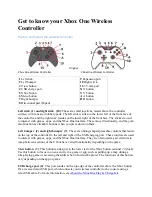
31
DIV
AL 600
Use, maintenance and warning instructions
MEDIUM PRESSURE REGULATOR
|
DESCRIPTION AND OPERATION
|
REV. A
EN
In the absence of pressure, the plug (3) is held in the open position by the spring thrust acting on the plug (3) through the
engagement of the rod (4) by the lever mechanism (8).
The downstream pressure value (Pd) is regulated by comparing:
• the load of the setting spring (9)
• the thrust that the downstream pressure (Pd) itself exerts on the main diaphragm (5).
The main diaphragm (5) moves the rod (4) and the plug (3). The rod (4) moves perpendicularly with respect to the gas flow.
In the case of zero flow, the plug (3) closes on the seat and allows the downstream pressure not to rise above the closing
pressure value.
Under normal work conditions, the plug (3) positions itself so as to keep the pressure downstream (Pd) around the pre-es-
tablished calibration value.
The position of the plug (3) is controlled by the movements of the main diaphragm (5). The forces which affect the position
of the plug (3) are:
• towards the closed position: the thrust resulting from the downstream pressure (Pd) in the chamber (C) and in the
chamber (D)
• towards the open position: the load of the setting spring (9).
Changes in the upstream pressure (Pu) do not substantially change the value of the downstream pressure (Pd) as the
mobile equipment is balanced.
The DIVAL 600 regulator is equipped with two anti-pumping valves (6, 7) are located in the sensing line of downstream
pressure (Pd) and at the top of the regulator head.
The anti-pumping valves slow down the inflow and outflow of gas in the head during transitional phases. Their function is
to minimise the effects caused by quick variations of the requested flow rate (quick variations of the downstream pressure
(Pd)) on the behaviour of the regulator.
The limit switches (12, 13) positioned in the regulator head eliminate the effects of possible overpressure below the main
diaphragm (5) or overloading of the adjusting spring (9), such as damage to the main diaphragm (5) or excessive load on
the plug.
If, during operation, the following should occur:
Operating conditions
Operating consequences
Concluding outcome
Decrease in downstream
pressure (Pd) for:
• increase in the request-
ed flow rate;
• drop in pressure up-
stream (Pu).
The thrust on the main diaphragm (5) is less
than the load on the setting spring (9) and
moves the plug (3) towards the open posi-
tion.
Increase in flow until the preset value
of the downstream pressure (Pd) is
restored.
Increased downstream
pressure (Pd) due to:
• drop in the requested
flow rate;
• increase in pressure
upstream (Pu).
The thrust on the main diaphragm (5) is
greater than the load on the setting spring (9)
and moves the plug (3) towards the closed
position.
Decrease in flow rate until the preset
value of downstream pressure (Pd) is
restored.
Tab. 4.14
Summary of Contents for Dival 600
Page 156: ...TM0023ENG...
















































